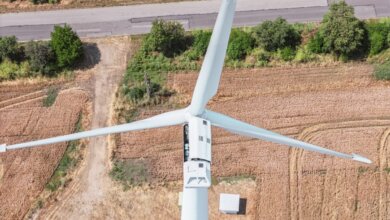Understanding Your Tenant Rights: Don’t Let Housing Disrepair Go Unchallenged

In the UK, every tenant has the legal right to live in a property that is safe, well-maintained, and free from serious health hazards. However, far too many tenants endure unacceptable conditions such as damp, mould, leaking roofs, broken heating, and structural damage. If your landlord has failed to carry out necessary repairs, you may be entitled to compensation—and help is available.
When disrepair issues persist and landlords fail to act, you don’t have to face the situation alone. The Housing Disrepair Team helps tenants assert their legal rights and secure both the repairs and compensation they deserve.
What Qualifies as Housing Disrepair?
Housing disrepair refers to any physical condition in a rental property that makes it unfit for living or violates the landlord’s legal obligations. Common examples include:
-
Persistent damp or mould
-
Leaking roofs or ceilings
-
Faulty boilers or broken heating systems
-
Unsafe electrical wiring
-
Broken doors or windows
-
Pest infestations linked to property issues
-
Water damage or leaking pipes
-
Cracked walls or unstable floors
Landlords are legally required to maintain the property’s structure and essential services. When they fail to do so, it’s more than just a minor inconvenience—it’s a breach of their legal duty.
What Are Your Legal Rights?
Under laws such as the Landlord and Tenant Act 1985 and the Homes (Fitness for Human Habitation) Act 2018, UK tenants are entitled to a home that is:
-
Safe to live in
-
Structurally sound
-
Equipped with working gas, water, and electricity
-
Free from health hazards such as mould or unsafe wiring
If your landlord doesn’t address repair issues within a reasonable time after being informed, they may be legally liable. In many cases, tenants are entitled to claim compensation and have the repairs completed at no cost to them.
The Impact of Living in Disrepair
Living in a home with unresolved disrepair can seriously affect your health, well-being, and finances. Common consequences include:
-
Respiratory issues from mould and damp
-
Mental stress due to ongoing maintenance problems
-
Increased heating bills from inefficient or broken systems
-
Damage to furniture and belongings
-
Time off work due to illness or unsafe conditions
The emotional and financial toll on tenants is significant. That’s why it’s important to seek expert help if your complaints are being ignored.
When Can You Make a Claim?
You can make a housing disrepair claim if:
-
You rent your home from a housing association, local authority, or private landlord
-
You reported the disrepair and your landlord failed to take action
-
The disrepair has caused inconvenience, health problems, or damage to your belongings
The Housing Disrepair Team can assess your case and help you determine whether you’re eligible to claim. Most claims are handled on a no win, no fee basis, meaning you won’t pay anything unless your claim is successful.
What Can You Claim For?
Tenants may be entitled to receive:
-
Compensation for inconvenience and discomfort
-
Reimbursement for damaged personal belongings
-
Repairs completed without cost
-
Medical costs for health issues caused by the property
-
Temporary accommodation expenses if you’ve had to move out
Compensation amounts depend on the severity of the disrepair, how long it has persisted, and the overall impact on your life.
The Process of Making a Claim
-
Initial Consultation: Speak with a housing disrepair specialist for a free assessment.
-
Evidence Collection: Provide photos, repair logs, medical records (if applicable), and landlord communication.
-
Professional Survey: An independent inspection of your property may be arranged.
-
Legal Action: A formal notice is sent to the landlord. If they fail to respond, legal proceedings may begin.
-
Settlement or Court Judgment: Most cases are settled out of court, but legal teams are prepared to pursue court action if necessary.
With experienced professionals managing the case, the process is simple and stress-free for tenants.
Why Choose a Specialist Housing Disrepair Team?
It’s vital to work with legal professionals who specialise in tenant rights and housing disrepair. The Housing Disrepair Team offers:
-
Deep legal expertise in UK housing law
-
Fast case assessments and expert support
-
No win, no fee service
-
Clear communication at every stage
-
Support in dealing with housing associations and councils
Tenants often feel powerless against landlords or local authorities—but with expert legal help, you can hold them accountable.
How Long Do You Have to Claim?
In most cases:
-
You have 6 years to file a disrepair claim
-
If health issues are involved, you have 3 years from the date of illness or diagnosis
That said, acting sooner makes it easier to collect strong evidence and achieve a quicker resolution.
How to Protect Yourself
While building your case, it helps to:
-
Document everything: Take time-stamped photos of the disrepair
-
Keep communication records: Emails, texts, and letters to and from your landlord
-
Track your expenses: Save receipts for anything related to the issue
-
Get medical documentation: If your health has been affected
Solid documentation strengthens your case and increases your chances of a successful outcome.
Don’t Suffer in Silence—Take Action Today
Your home should be a place of comfort, not a source of daily stress and health problems. If your landlord isn’t upholding their responsibilities, you have the right to take legal action.
The Housing Disrepair is here to support you with expert legal advice, a proven claims process, and the confidence to challenge unfair treatment. Don’t wait until the problem gets worse—start your claim today.




